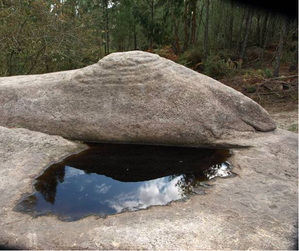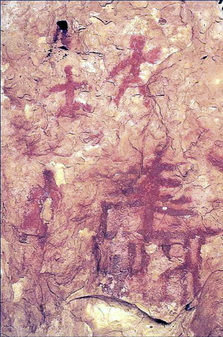2016 - Feb : Lara Bacelar Alves - Vibrant stones.
Prehistoric art, cultural identity and memory.
|
In the beginning, there was rock… It was shaped, painted, carved and the messages deployed incorporated rocks in the narrative. Indeed, stone is both the backdrop and the raw material used in the production of what we conventionally call «rock art» even though authors like Alfred Gell prefer to call it a «technique of enchantment». The former encapsulates the idea that we deal primarily with a finished visual ‘object’ whereas the latter values the means by which it is produced, unveiling parts of its meaning. Yet, meaning and substance actually merge on the ‘artist’s’ gestures. Thus, insights into the techniques, raw materials employed and the interaction between motifs and natural features of the rock, helps us thinking about the roles that rock art played for the communities responsible for their creation, use and re-use.
|
|
In the first part she dealt with prehistoric art in north-western Iberia where two rock art traditions on natural rock formations – Atlantic Art and Schematic Art- occur in distinct, although neighbouring, regions and share their setting with two different styles of Megalithic Art. Atlantic Art spans throughout NW Iberia, Ireland, northern England and Scotland. It is typically carved on open-air outcrops and its distribution overlaps with that of another eminently abstract style found inside megalithic tombs. Schematic Art spans across Mediterranean regions and occurs mainly as paintings in shallow caves, rock shelters and stone-built tombs.
|
Whereas Atlantic Art actually transforms or enhances features of open-air outcrops in Schematic Art the designs are often added up to naturally decorated backgrounds as if an intimate dialogue was to be materialised through the rock surface. Thus, evidence from north-western Iberian prehistoric art ultimately raises questions on how Atlantic and Mediterranean cosmologies merge towards the fringes of their cultural and natural environment in the Neolithic.
|
The second part the biography of such sites was addressed, for not only carvings and paintings were preserved but also an associated oral tradition was perpetuated over time. These sites are frequently given names, showing how important they still stand as landmarks for peasant populations in the region. Stories and legends recurrently tell us that beautiful young Mooresses live trapped inside rocks under a magical ‘spell’. They are the guardians of great treasures and often reveal themselves to humans on St John’s day. The ‘Moors’ are indeed spirits that are believed to live in rocks, springs, mountain tops and rivers. Anthropology of Art studies tell us that mythological narratives of spirits inhabiting natural features in the landscape are widespread across non-Western societies. But why do these legends still dominate the imaginary of peasant communities in north-western Iberia? |



